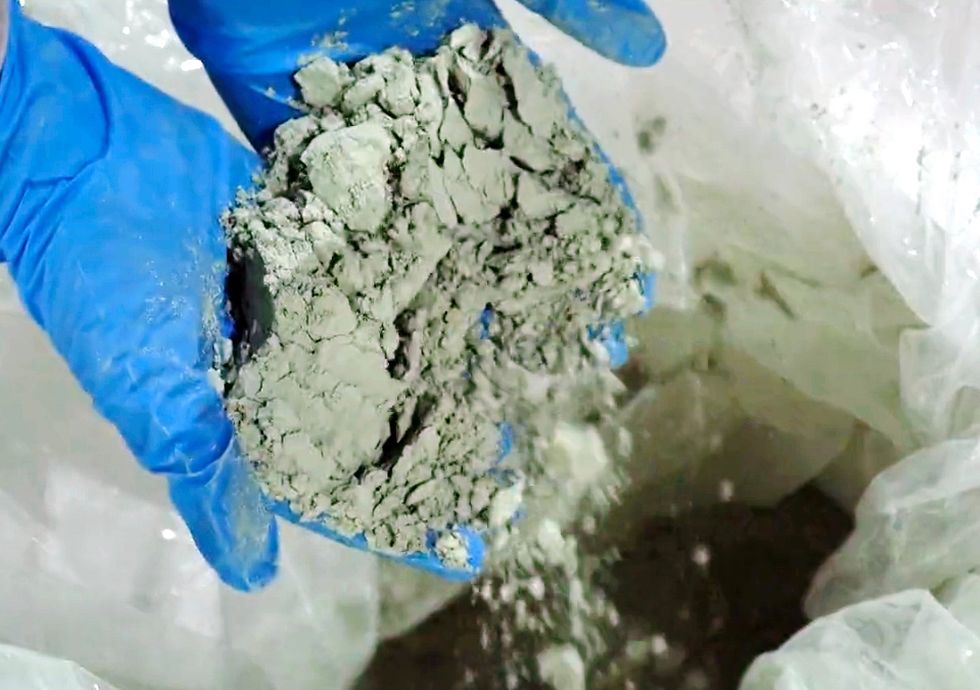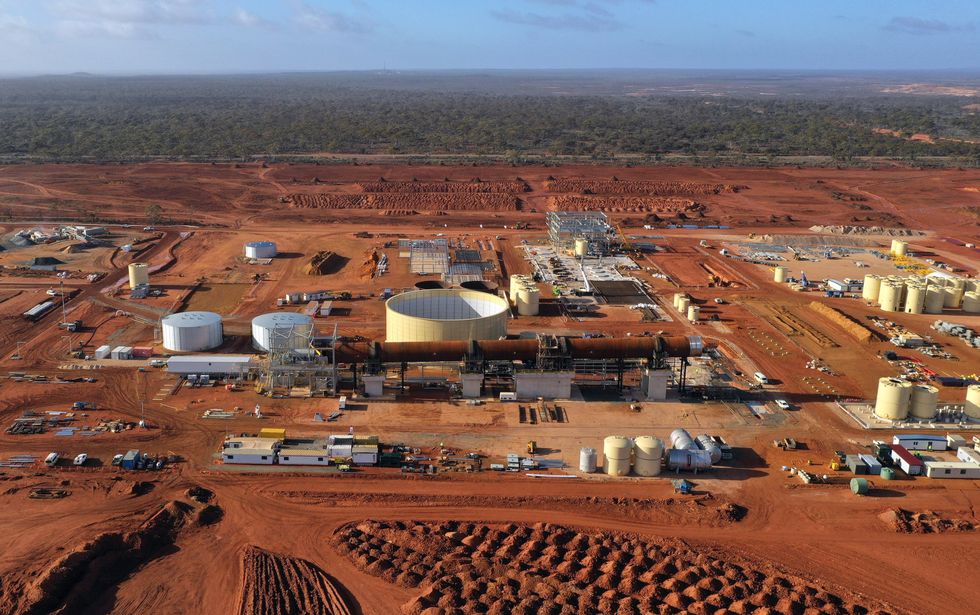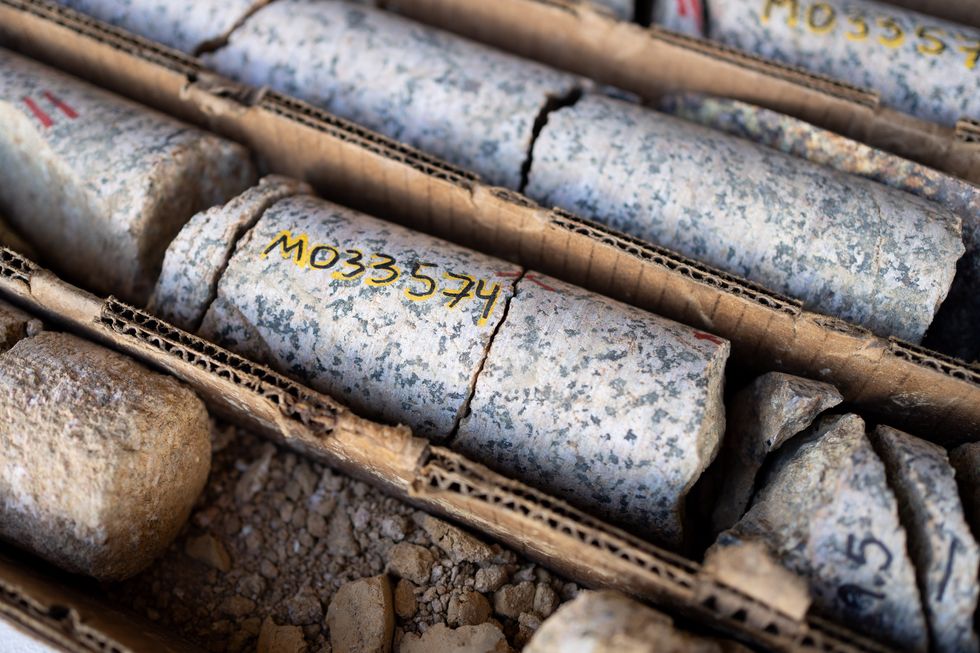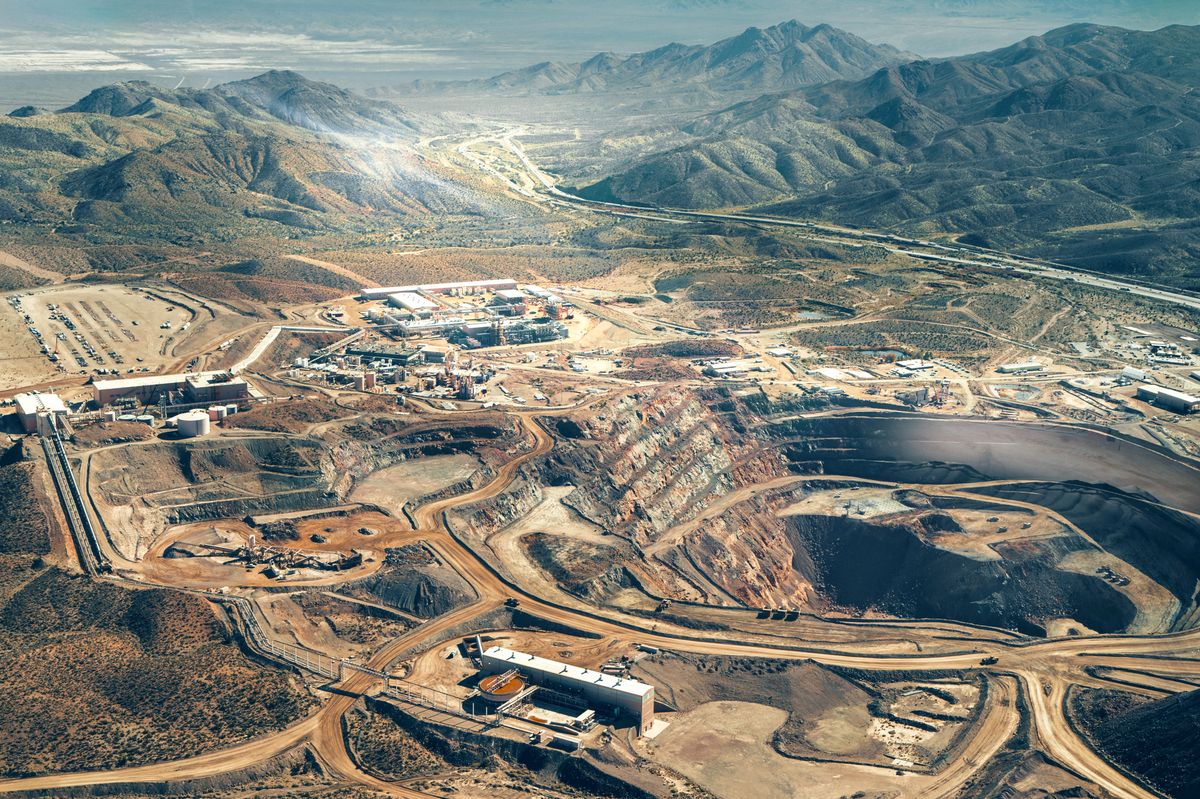It would be an overstatement to say that the modern world runs on rare-earth elements. But as overstatements go, that one has more than a grain of truth.
Because of their unique luminescent, electrochemical, and magnetocrystalline properties, rare-earth elements are essential to some of the most important and fastest-growing tech-based industries. They’re used in the phosphors that make white-light and other LEDs possible, and they’re in compounds used to purify key semiconductor materials such as silicon carbide and gallium nitride, to indicate just a couple of their scores of applications in technology. Perhaps most importantly, though, they’re essential components of the permanent magnets used in the motors of most electric vehicles and many appliances, and also in the generators in most wind turbines.
As much as 90 percent of processed rare-earth elements come from China, a supply-chain dependence that spooks Western executives and, especially, defense officials.
That critical importance of rare-earths in so many tech industries is of mounting concern in many Western countries. As much as 90 percent of processed rare-earth elements come from China, a supply-chain dependence that spooks Western executives and, especially, defense officials. Rare earths are vital to countless military applications, including night-vision goggles, laser-targeting and -rangefinding systems, avionic displays, and polishing and other compounds for optical lenses. In addition, rare-earth permanent magnets are used in the motors and actuators for many military systems, such as the ones that steer missiles and smart bombs, as well as assemblies in the engines of the F-35 fighter jet, and in the traveling-wave-tube and klystron systems used in radars and satellite communications.
On February 24, 2021, U.S. President Joseph R. Biden signed an Executive Order directing the U.S. Department of Defense and other agencies to assess the vulnerabilities of critical US supply chains, including those for rare earths. That order was followed over the next couple of years by the DoD’s awarding of well over US $100 million in grants, investments, and initiatives aimed at shoring up U.S. access to rare earths.
A cornerstone of the program was a $35 million award, in February 2022, to MP Materials to design and build a facility to extract and process rare-earth elements from ore at its Mountain Pass mine in California. It followed an earlier, $10 million award to MP Materials, in November 2020. The facility is on the site of the last major rare-earth processing plant in the United States, which ceased operations in the 1990s. Now, with the Mountain Pass plant starting operations and several other such facilities planned for construction in the next couple of years, Western officials are grappling with the environmental implications of a large-scale return of rare-earth processing.

For insights into the global rare-earth industry at this important juncture, IEEE Spectrum contacted Melissa “Mel” Sanderson, a board member and consultant at American Rare Earths, for which she previously served as president of the company’s North American operations. Sanderson, a former foreign service officer at the U.S. Department of State, is also a professor of practice at the Thunderbird School of Global Management at Arizona State University.
Melissa Sanderson on…
- The size of the global rare-earth industry
- Why China dominates rare-earth processing and production
- How the U.S. Inflation Reduction Act is spurring rare-earth production in the West
- Advanced technologies for rare-earth processing
What are some of the most important rare-earth elements, and what are they used for?

Melissa Sanderson: Well, there’s essentially two groups within the rare element family, lights and heavies. Within the lights, there are two elements that everyone is chasing, neodymium and praseodymium. And the reason everyone is chasing those is because they’re used in the manufacturing of magnets. So magnets go into motors. Therefore, they’re very essential.
Wind turbines, too. The generating dynamos have permanent magnets.
Sanderson: Absolutely. But here’s the catch. Those two alone are not sufficient because those kinds of motors run very hot, very quickly. So you really want to couple those up with two heavies, dysprosium and terbium. So the great unicorn of deposits is one that has significant deposits of the light two and the heavy two. And then you’re golden because that’s when you’re able to offer the finishers the product that they need to produce reliable magnet metals that are going to run longer and cooler.
“I’ve seen studies that estimate [the rare-earth-element industry] in the hundreds of billions of dollars range.”
—Melissa Sanderson, American Rare Earths
So what is the current state of the rare-earth-element industry? First, how big is it? What are we talking about in terms of global annual turnover in the rare-earth-element industry?
Sanderson: Well, I’ve seen studies that estimate it currently in the hundreds of billions of dollars range. And I’ve seen--
For all the rare earth elements?
Sanderson: Yes. And I’ve seen forward-looking studies that make certain kinds of growth assumptions in key economic areas and don’t even factor in demand from defense sectors that push that level well over a trillion dollars by the time we reach 2050. So it’s a good, strong market now, and it’s one that appears to have healthy legs under it.
What is the current state of the industry globally? As we all know now, China dominates both mining and processing. But what are the statistics on that?
Sanderson: Well, most of them show that China controls more or less 80 to 85 percent of the finished product output and 90 percent of processing. So those two are related in the sense that China is obviously mining its own rocks, but most companies that are in business today, outside of Australia, are sending their rocks to China for polishing, finishing, and separation as well. So that’s why there’s a slight variation in those numbers because it’s not all mined in China, but most of it is finished in China.
“in Western countries... the industry is characterized by junior miners.”
—Melissa Sanderson, American Rare Earths
And that covers everything, light rare earths, heavy rare earths, and so on?
Sanderson: Yes.
Why does China so completely dominate processing, especially?
Sanderson: Well, look back 25 years. No one was talking this much about, ‘Oh, lithium, and oh, rare earths,’ because the technologies weren’t that widespread. The change in technology and its rapid development is what has made China so crucial because 25 years ago, nobody wanted to deal with processing. The technology, particularly in those times, was not particularly environmentally friendly. You could just pretty bluntly say “dirty technology.” And Western countries, by and large, did not want to have that onshore. So collectively speaking, we were all glad to hand it over to China. … So China was able to stand up a very strong processing industry relatively quickly, and that’s how they got the jump on the market.
We have a different situation now. We have a number of countries, particularly the United States and Australia, very interested in rare earths again. Both of them had rare-earth industries, if you go back, I guess, 40, 50 years or so. What are their plans and why are they now interested, again, in having their own industry after years of relying on China? And how much progress has been made so far in the United States and Australia?
Sanderson: I would also throw Canada into that mix because more or less, that’s the big three of Western mining countries that are currently pushing hard to stand up indigenous rare-earth capability from one end to the other, meaning from digging the rocks up to doing initial processing to being able to provide a magnet-motor-ready product to the magnet manufacturers. So when you look at the state of the market, what you find is in Western countries, the three that I’m talking about, with the exception of Lynas, which is an Australian company that has been in rare earths now for a good long time, the industry is characterized by junior miners. [These are] smaller startup companies that have located very promising prospective deposits, prospective mines, and are in the scramble to obtain permitting and resources to be able to build those mines. So government support is viewed as important, and the U.S. government has certainly stepped up…. But it is an unprecedented level of funding and hasn’t been seen from the U.S. government since World War II, basically. And the intention of Congress clearly was to develop an indigenous U.S. mining capability. We know this because at the same time that they were working on the IRA —
“For national security, we also need to get access to these rare earths, whether we do it within our boundaries or whether we do it with allies.”
—Melissa Sanderson, American Rare Earths
Inflation Reduction Act.
Sanderson: Yes. The Inflation Reduction Act, IRA. They were simultaneously passing legislation requiring, for instance, American-based electric vehicle manufacturers to source their inputs domestically by 2030. So clearly, the intention was to have new mines in America that they could buy from. Well, the realization has hit that, particularly with the permitting process in America, that’s not going to happen. And therefore, IRA money has been opened to allied nations like Canada and Australia to help in their rush to develop new companies and build the industry on the expectation that they will sell to the US companies the materials needed to transform our economy, which is one major reason for this push. We want to transform our economy into a greener, cleaner, more environmentally sustainable economy. And secondarily, and just as important, the defense industry relies heavily on rare-earth inputs for all of its high-tech gadgetry. And so for national security, we also need to get access to these rare earths, whether we do it within our boundaries or whether we do it with allies.
So the US has a sort of twofold stance or a twofold initiative going, both commercial use of rare earths in electric vehicles and also defense uses. And they are both benefiting, or is it just the commercial activity benefiting from the Inflation Reduction Act?
Sanderson: Oh, no. Absolutely not. I mean, the Department of Defense, as a matter of fact, has been, in some ways, the most direct element assisting this growth in the United States because, for instance, it’s the Department of Defense that gave money to MP Materials, currently the only U.S. large manufacturer of rare earths to build its processing capability and therefore free that up from China. And--
You mentioned MP Materials, based in Las Vegas, and they have just started operating a large mine with a processing facility right nearby in Southeastern California.
Sanderson: Yes. There have been a few delays, but the processing plant is up and running now.
What are some of the other big companies outside of China that are up there now competing and actively pursuing mines and/or future processing capabilities?

Sanderson: The other one that everyone talks about is the one out of Australia, Lynas. And Lynas, as a matter of fact, has also received funding from the Department of Defense to build a processing separation facility in Texas that will service both light and heavy materials. So when that comes on stream, that will be a wonderful opportunity for American companies, who may not be able at that moment or may not want to invest in a full processing stream, to sell concentrate to Lynas’ processing facility in Texas. Lynas is also building a new processing facility in Australia, which is going to receive the feedstock from one of their large mines that’s located nearby.
And they’re operating a big plant in Malaysia, if I’m not mistaken.
Sanderson: Well, Lynas has got some issues in Malaysia. Press reporting shows that the government is on track, at least at this time, to more or less cancel that plant due to public outcry. There’s a resistance to processing, particularly heavy rare earths that tend to come coupled together with uranium and thorium. And that raises a lot of concern in the public mind, not just in Malaysia, but everywhere in the world, because they hear those words and of course, they know those are radioactive elements; those are dangerous elements. We don’t want those here. So Lynas has been going back and forth with the Malaysian government.
So Lynas’ first large-scale processing plant outside of Australia. Are they operating any in Australia?
Sanderson: Oh, yes. And then they’re building this newest one also.
In Texas.
Sanderson: As far as the Western world goes, Lynas is the major competitor to China in terms of both production and processing.
I’ve seen some news reporting recently about Vietnam having big aspirations in rare earths, but they hit a snag recently.
Sanderson: There’s an ongoing allegation, evidently, by the Vietnamese government, that there may have been some inappropriate contracting around the use of those facilities. It’s kind of vague, but the upshot is that at the moment, Vietnam has more or less shut down those aspirations.
My impression is that a rare earth mining company had contracted with a Chinese organization for processing in defiance, or in violation, I should say, of Vietnamese rules which sought to have processing occur in Vietnam.
Sanderson: Yes, that’s why I say it’s really very murky because I think that most of the story that’s come to the press has come from the government side, and therefore, it’s really hard to know what the reality may or may not be in those circumstances.
Okay. So you’re a board member, a former president, at American Rare Earths, which is no slouch in the rare-earth game. What can you tell us about Rare Earth’s plans?

Sanderson: It’s a wonderful time for us because a few months back, we issued an initial resource evaluation of our primary opportunity in Halleck Creek, Wyoming. And that deposit is truly a strategic asset for the United States of America. It’s huge. It’s 1.4 billion tons of total rare earth, and that equates down to after processing and separation, more or less, a million tons of that neodymium and praseodymium that we were discussing earlier, so two of the key materials necessary. We’ve just completed a new round of drilling to take our exploration even deeper because one of the wonderful things about this deposit is it’s very consistent in the distribution of the rare earths to depth, as far down as we went on our first drilling round, which was 150 meters. So this drilling round, we’re going down to 300 meters, and we’re eager to see the returns from that.
“Ultrasound separation is one that would use essentially the same technology that is used in a doctor’s office... to essentially excite the desired molecules to drop out of a solution.”
—Melissa Sanderson, American Rare Earths
The other thing that is highly prospective about this deposit is it has virtually none of those two penalty elements, uranium and thorium, which means that in some ways, it’s a lot easier to process and certainly will be less costly because we won’t have to engage in having separate storage facilities to handle those materials. And we also, on the permitting side, probably will not need to get a permit from the nuclear regulatory agency so long as when we go through our processing, we don’t find that the materials concentrate. And at the moment, they are not. So those are huge benefits for us.
Are you also planning to do your own processing, or would you contract that out?
Sanderson: No, we’re absolutely interested in doing our own processing. The deposit has recently shown that it will lend itself very readily to a leach process. So that’s standard, available, readily known technology.
Are there new ideas in processing of rare earth ore? What are the basic types? You mentioned leach processing. And what are people contemplating doing now that we’re going to have rare earth processing in the United States any day now, any month now? What are some of the precautions or ideas that people have to minimize the environmental impact?
Sanderson: There’s lots of exciting channels being pursued, some of which are being funded by the U.S. government. Ultrasound separation is one that would use essentially the same technology that is used in a doctor’s office when you go in for an ultrasound exam. But it would be used to essentially excite the desired molecules to drop out of a solution. So that’s one that’s being looked at by various companies. The U.S. government, as a matter of fact, we’re cooperating with both the Department of Energy and the Department of Defense and a consortium of universities that are looking at biological separation of the desired elements. So in other words, using CRISPR technology to engineer bacteria or enzymes to bind directly to the neodymium and the praseodymium, pull those out of the broader solution and drop them down ready for final processing. So those are a couple of examples of the lines of thought that are underway. And it’s a very exciting time because if any of these lines of research are fully realized, it’s a game changer for the industry in terms of the green processing and also probably much faster processing and potentially less expensive processing. So all of those would contribute to further magnifying the value of rare earths in our societies.
Editor’s note: A spokesman for MP Materials told IEEE Spectrum that the company began operating the Mountain Pass processing plant in the spring, and that it produced 50 tons of refined NdPr oxide in the third quarter of this year.
This interview was edited lightly for concision and clarity.
- GM and Stellantis Back Rare-Earth-Free Permanent Magnet ›
- The Rare-Earth-Metal Bottleneck ›
- U.S. and Japan Seeking to Break China’s Grip on Rare Earths Production ›
Glenn Zorpette is editorial director for content development at IEEE Spectrum. A Fellow of the IEEE, he holds a bachelor's degree in electrical engineering from Brown University.



